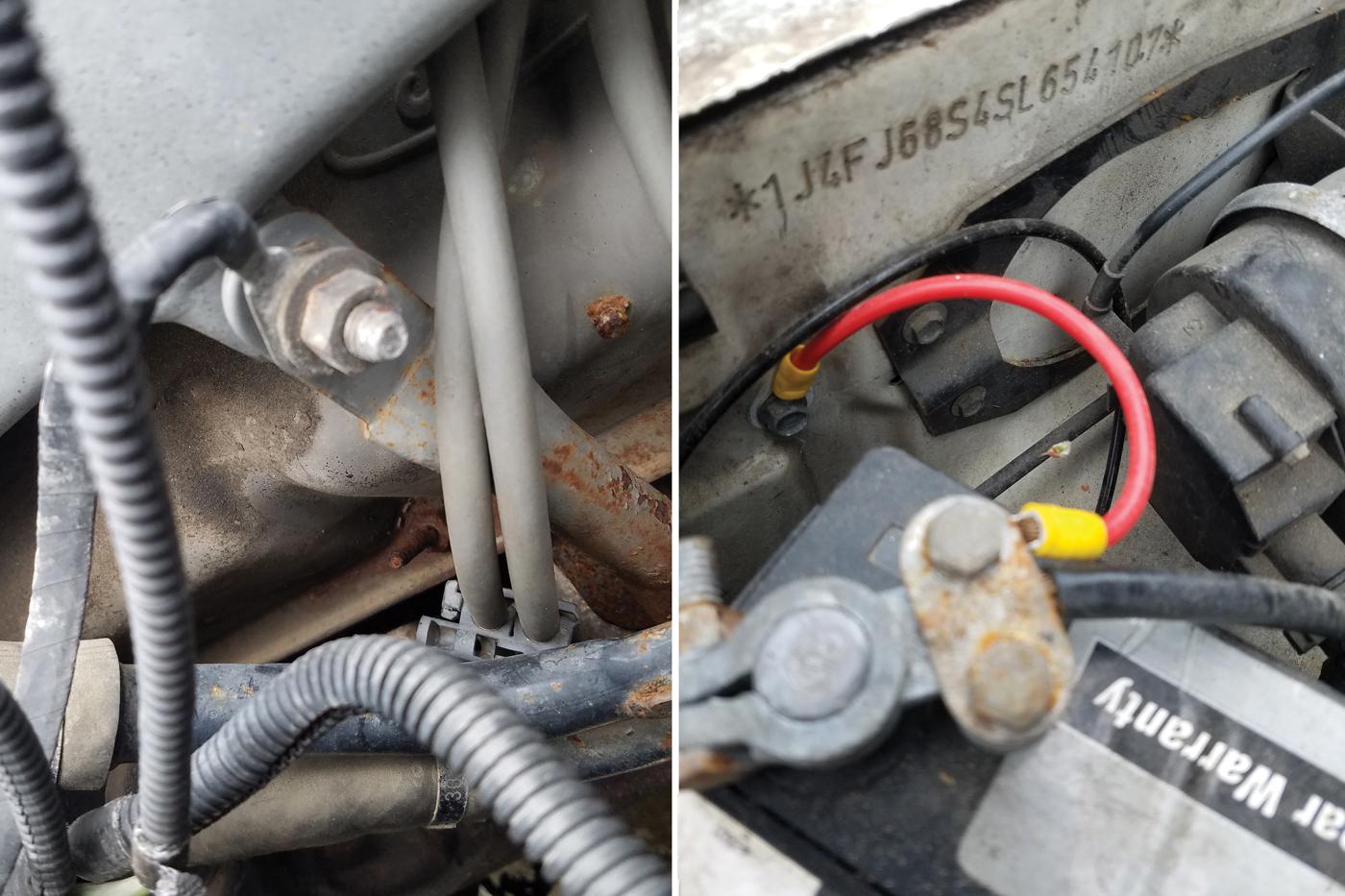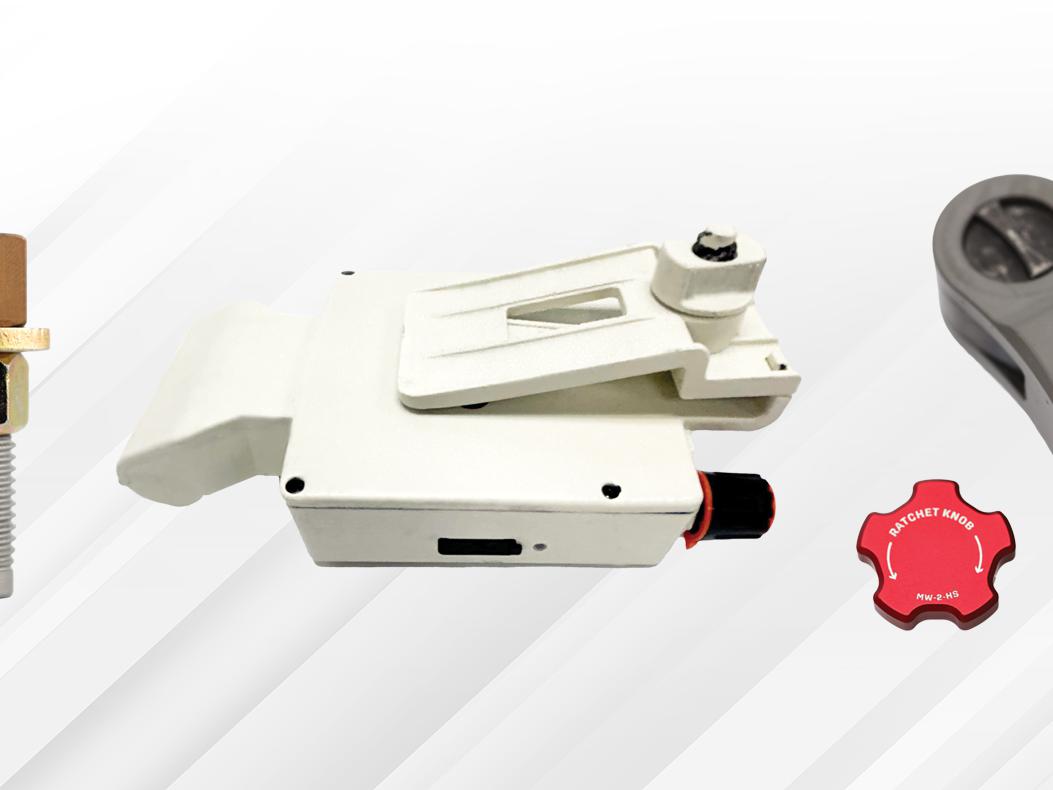Stop Doing That…Do This Instead: Gauge Installation

The most common problem associated with gauge installation, according to our source, is improper grounding. To illustrate, the setup at far left shows the correct way to ground, while the photo at right has incorrect color wiring and no shrink wrap to supply strain relief.
Instruments often malfunction due to improper grounding, excessive vibration, or flimsy wire connections. Here’s how to avoid these common complications.
“The number-one common issue” when installing gauges, according to Marc Erickson of Auto Meter Products, Sycamore, Illinois, “is grounding. Getting a good ground on the chassis, or the engine block or cylinder head, will rectify 90% of [installation] problems.”
This is an issue when putting gauges in any type of car, but it can be particularly problematic in a competition vehicle, Erickson explained. “There are so many electronics in today’s race cars. Anything with any type of electronic current running to it normally creates RF [radio frequency] noise. We’ve built our products to handle the RF noise, but if you don’t have significant ground, it doesn’t matter how good of a product you build. It’s just not going to operate correctly.”
Compounding the problem is the fact that “a lot of race car interiors are tin or aluminum,” he pointed out. “People think they can take the ground from the tach or another gauge and just run it to a piece of tin in the vehicle. But a builder will often put silicone or something around the outside of a metal floor to keep debris, water, or smoke out. When you put silicone on, it insulates the floor, and there’s no ground path back to the battery.”
RF noise can be particularly disruptive to the function of tachometers, Erickson said. “Tachs are based on pulse input, 12-volt square-wave inputs from the ignition system,” he explained. “If you do not have it grounded correctly, the input wire, or even the power wire, will pick up RF noise. The tachometer will read the RF noise as pulses coming into the tachometer, and it will either start jumping all over the place or will read high.”
Oil pressure and water temp gauges, on the other hand, “are based on resistance to ground. They’re going to take the path of least resistance,” he said. “The sending unit and oil pressure gauge are grounded in the block, or the head, and the other one doesn’t have a significant ground if it’s grounded to a piece of tin in the car. It then grounds through the actual sending unit, making the gauges read high. Relocating the ground to a good chassis ground or the block or the head will take care of these problems.”
Bad Vibes
Vibration can create problems with instruments, Erickson said, “especially on gauges, like oil pressure gauges, that have a large pressure sending unit. We’ve seen a racer mount a sending unit to the block and then can’t understand why they’re continually going through sending units. They don’t consider the solid mounts on these cars. With the sending unit on the block, and everything mounted solid, the harmonics have to go someplace. They will vibrate a sending unit to pieces.”
The solution is to “mount the sending unit on a steel-braided line, and then mount that on the firewall or an inner fenderwell if the car has them and isolate it a bit on a rubber pad.”
Auto Meter also makes liquid-filled gauges “to help handle vibration if you’re going to mount a gauge in a high-vibration area, like on the chassis, in the engine compartment or on the back of a supercharger,” Erickson said. “It will also dampen the actual needle movement of the gauge itself, so it’s not bouncing all over the place when you’re trying to read the gauge.”
Connections
Pay attention to wire connections, Erickson advised. “We’ve seen people use an inexpensive ring terminal with nothing on it—the bare wire coming out of the ring terminal—and as the car ran, you could see the wire move up and down. Especially if it’s inexpensive wire, as it moves up and down it’s going to break.”
He recommended making those connections using “ring terminals that are crimped on with a good crimper, then after that use some sort of heat shrink with glue inside of it.” Some suppliers call it marine heat shrink “because the glue makes it waterproof. When you heat the wrap, the glue comes out and holds everything together. That eliminates the movement of the wire in the ring terminal and gives it some strain relief.” There are “ring terminals, butt connectors, and spade connectors that have the glue-type of shrink wrap built right into it,” he added. “You crimp it on, hit it with a lighter or a heat gun, and it’s already all there.”
Before the Install
“Do your research before purchasing the product, and purchase the product that does what you need it to do,” Erickson said. For example, Auto Meter sells “the most basic tach that will show just engine rpm’s to ones that will record a run and let you download it so you can look at it on your PC. Or let’s say you want an oil pressure gauge, but you also want a low-pressure sending unit and a warning light. You don’t have to buy all that separately. We have those features built into one product. If you’re looking for a gauge that you want to do something specific, contact us and make sure you’re getting what you want.”
SOURCES
–
Auto Meter Products
autometer.com
 MEMBERSHIP LOGIN
MEMBERSHIP LOGIN JOIN PRI
JOIN PRI


